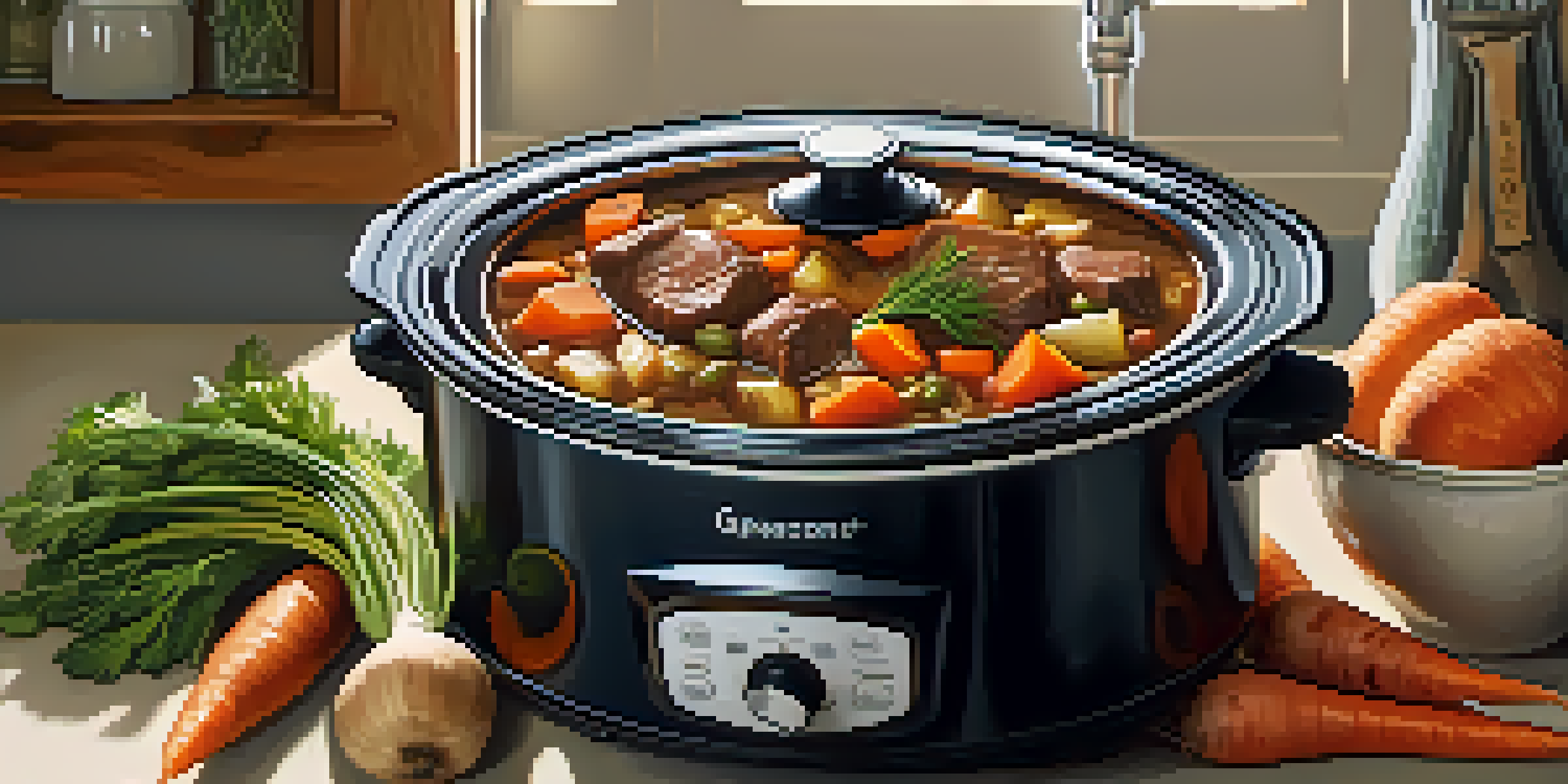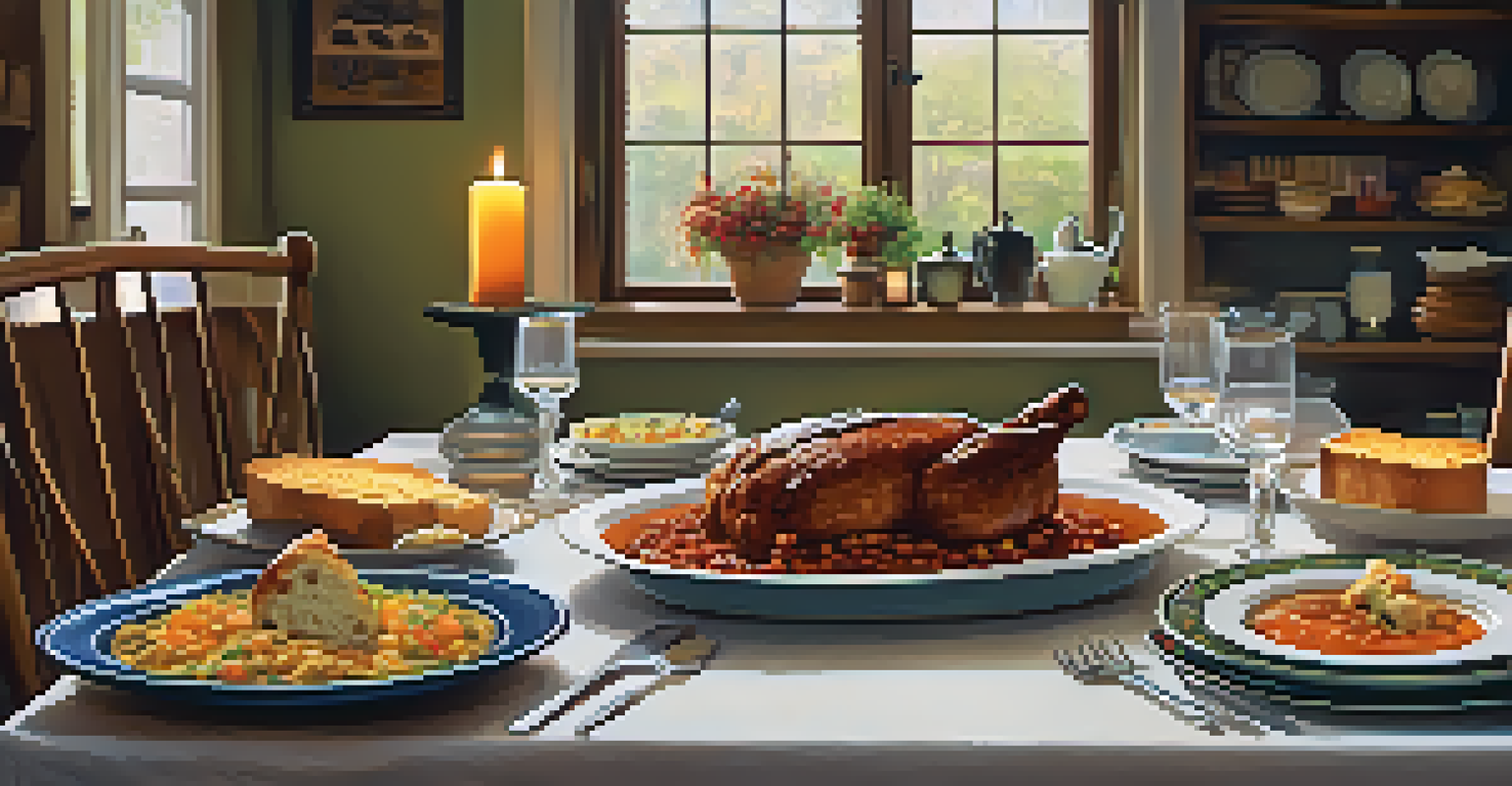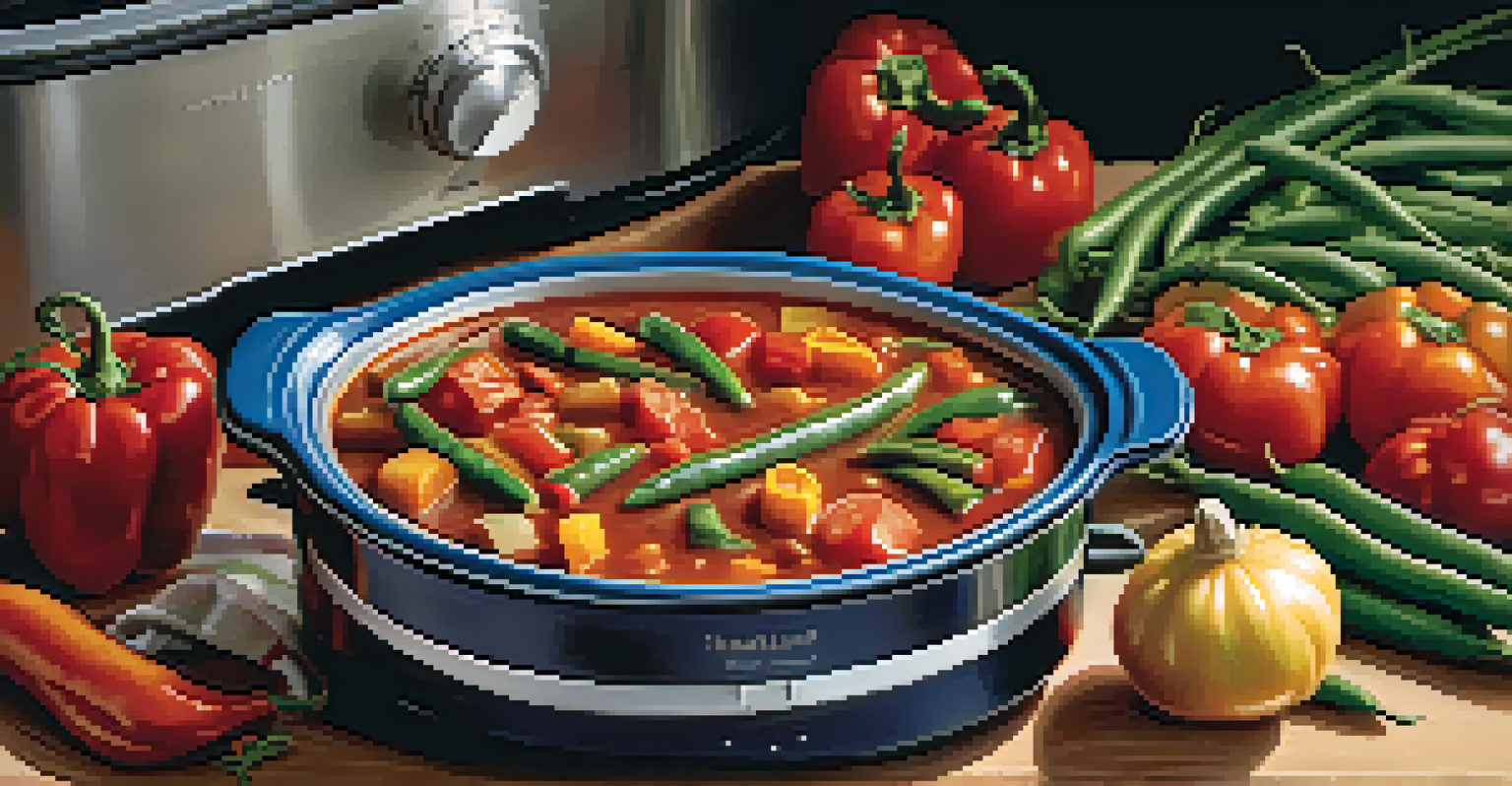Slow Cooking Benefits: Nutritious Meals with Minimal Effort

What is Slow Cooking and How Does It Work?
Slow cooking involves preparing food at low temperatures over an extended period. This method allows flavors to meld beautifully, creating rich, satisfying dishes. A slow cooker, or crockpot, is typically used, making it easy to toss in ingredients and walk away.
Cooking is like love. It should be entered into with abandon or not at all.
The low and slow approach retains moisture, meaning your meals are often more tender and juicy. Think of it as a gentle hug for your food, where heat envelops the ingredients, slowly coaxing out their natural flavors. This method can turn tough cuts of meat into fork-tender perfection.
Additionally, slow cooking is incredibly forgiving. You can set your meal in the morning, and by dinner time, it’s ready to enjoy. This convenience is a game-changer for busy individuals and families who want nutritious meals without the hassle.
Health Benefits of Slow Cooking
One of the key benefits of slow cooking is its ability to make healthy meals easy. By using whole ingredients like vegetables, lean meats, and grains, you can control what goes into your dish. This means more nourishment and fewer preservatives and additives.

Slow cooking also helps retain nutrients that can be lost in other cooking methods. Because the food cooks at lower temperatures for longer, vitamins and minerals are less likely to break down. For instance, cooking vegetables this way can keep their vibrant colors and essential nutrients intact.
Slow Cooking Enhances Flavor
The slow cooking process allows spices and ingredients to develop rich, layered flavors over time.
Moreover, slow cooking encourages the use of beans and legumes, which are high in protein and fiber. These ingredients not only fill you up but also support heart health and maintain stable energy levels throughout the day.
Time-Saving Convenience of Slow Cooking
In today’s fast-paced world, time is a precious commodity. Slow cooking allows you to prepare meals in advance, freeing up your evenings for family time or relaxation. Just prepare your ingredients, set the cooker, and let it do the work while you go about your day.
The secret of good cooking is, of course, good ingredients.
This method is particularly beneficial for meal prepping. You can create large batches of stews or soups that can be portioned out for the week, saving you time and effort during busy weekdays. It’s like having a personal chef that works on your schedule.
Additionally, fewer dishes are required when you utilize a slow cooker. Most meals can be cooked in one pot, which simplifies cleanup and reduces the stress of post-dinner chores. Less time cleaning means more time enjoying your meal and your loved ones.
Flavor Development in Slow Cooking
One of the most delightful aspects of slow cooking is how it enhances flavor. The longer cooking time allows spices and seasonings to penetrate the food deeply, creating a symphony of tastes. Imagine the comforting aroma of a beef stew simmering all day, drawing everyone to the kitchen.
Slow cooking also encourages the use of aromatic vegetables like onions, garlic, and herbs, which release their flavors slowly over time. This method allows the food to build layers of flavor that you simply can’t achieve with quick cooking techniques. It’s like a slow dance of ingredients, harmonizing beautifully.
Time-Saving Meal Prep
Slow cooking allows for easy meal preparation, freeing up time for busy individuals and families.
Furthermore, browning meat beforehand can enhance the flavor even more. Not only does it add a lovely color, but it also develops a depth of flavor that makes the dish feel more gourmet. Your family may think you spent hours in the kitchen, but your secret will be safe with your slow cooker!
Cost-Effective Cooking with a Slow Cooker
Cooking with a slow cooker can be an economical choice, especially as it shines with budget-friendly ingredients. Tough cuts of meat, which are often less expensive, become tender and flavorful when slow-cooked. This method transforms economical choices into delicious meals.
Additionally, slow cooking encourages the use of seasonal vegetables and grains, which can further reduce costs. Buying in bulk and utilizing pantry staples can pave the way for a variety of meals without breaking the bank. Just think of all the hearty soups and stews you can create!
Over time, the savings can really add up, making slow cooking a smart choice for families or anyone looking to stretch their grocery budget. Plus, fewer takeout meals mean more home-cooked goodness, which is always a win!
Versatility of Slow Cooking Recipes
One of the joys of slow cooking is its versatility. You can prepare a wide range of dishes, from savory stews and casseroles to sweet desserts. Whether it’s chili, curry, or even a delightful bread pudding, there’s a slow cooker recipe for every palate.
Many recipes can be adjusted to suit dietary needs, such as gluten-free or vegan options. This adaptability makes slow cooking a fantastic choice for families with diverse tastes or restrictions. You can simply swap out ingredients to cater to your needs.
Cost-Effective and Nutritious
Utilizing budget-friendly ingredients in slow cooking helps create healthy, satisfying meals without breaking the bank.
Moreover, the internet is brimming with slow cooker recipe ideas, giving you endless inspiration. Whether you’re a novice or an experienced cook, there’s always something new to try. This keeps meal planning exciting and encourages culinary creativity.
Getting Started with Slow Cooking
If you’re new to slow cooking, starting is easier than you might think. Begin by choosing a reliable slow cooker that fits your needs. There are various sizes and features, so pick one that aligns with your cooking habits. A basic model can work wonders without overwhelming you.
Next, gather a few simple recipes that intrigue you. Consider starting with classic dishes like beef stew or vegetable soup. These meals typically require minimal prep and allow you to see the benefits of slow cooking firsthand. Don’t hesitate to experiment with flavors and ingredients!

Lastly, embrace the process! Slow cooking is all about patience and enjoying the journey of creating a delicious meal. As you become more comfortable, you can explore more complex recipes and techniques, making slow cooking a delightful addition to your culinary repertoire.